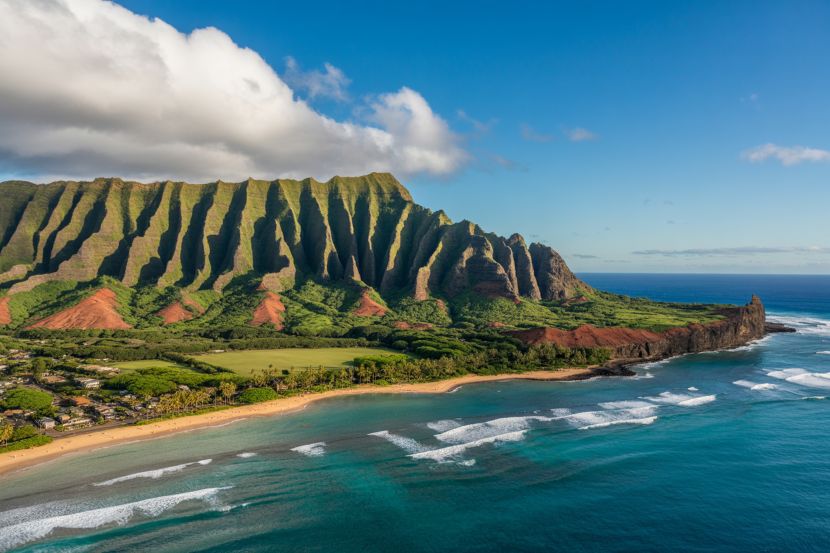Home » TOURISM NEWS » Hawaii Faces Economic Struggles: Tourism Slows, Job Losses Rise, and Tariffs Threaten the Cost of Living, All That You Need to Know
Published on
September 27, 2025
Hawaii’s economy is showing signs of stress as a combination of declining tourism, job cuts, and inflation-driven by tariffs threaten to bring the state closer to a mild recession in the coming year. The University of Hawaii Economic Research Organization (UHERO) reports that Hawaii is feeling the ripple effects of federal policy changes, such as the slowing of job growth, immigration regulations, and the introduction of new tariffs. The once-strong connection between Hawaii’s economy and the broader U.S. economy is weakening, and UHERO economists predict a challenging economic future for the state. As job numbers dwindle and the cost of living continues to rise, residents and businesses are grappling with uncertainty.
Hawaii’s Economic Downturn: Key Drivers
Several factors are contributing to Hawaii’s economic downturn, with the tourism sector being particularly affected. After enjoying a period of growth driven by U.S. economic strength, Hawaii’s tourism industry has seen a sharp decline. Data shows that the number of visitors to the islands began decreasing significantly in early spring, a trend that continues to affect the local economy. This slowdown has coincided with a broader economic stagnation in the U.S., impacting various sectors like manufacturing and housing. Despite these struggles, Hawaii remains dependent on federal policies and national trends to guide its recovery.
The state’s employment situation is also concerning, with a dramatic drop in job creation. Over the past three months, new job additions have fallen by an alarming 80%. Additionally, federal employment in Hawaii has decreased by 1,200 positions, and overall employment in the state is still 15,000 jobs below pre-pandemic levels.
Federal Policies Add Pressure
The impact of federal policies is palpable in Hawaii. The combination of tariff-induced inflation and continued uncertainty regarding government operations is exacerbating the situation. Many businesses, including those in agriculture and manufacturing, are facing supply chain disruptions, soaring costs, and a lack of predictability in pricing. As new tariffs come into play, particularly affecting trade with other countries, businesses are forced to adapt to higher costs and shifting consumer behavior. This is especially evident in Hawaii, where the cost of living is projected to rise by an additional $1,400 per year for an average household by 2026.
The ongoing risk of a government shutdown is adding more pressure to an already fragile situation. Without a federal spending bill, delays in pay and government services could further destabilize the state’s economy. For Hawaii, this potential shutdown looms large, threatening the very services that residents rely on.
The Bright Spot: Hawaii’s Construction Sector
Despite the challenges, there is some positive news in the construction sector. Hawaii’s economy is buoyed by military contracts and public projects, which are keeping construction activity elevated. This sector is expected to remain strong throughout most of the decade, offering a degree of stability amid the broader economic uncertainty.
The Bigger Picture: What Does This Mean for Hawaii’s Future?
The combination of declining tourism, reduced job growth, and rising costs presents a challenging scenario for Hawaii’s residents. However, much of Hawaii’s economic fate lies in the hands of national trends. If the broader U.S. economy weakens, Hawaii could be pulled further into recession, even if the mainland doesn’t officially enter one.
For travelers planning a trip to Hawaii, the economic uncertainty might lead to some shifts in how they experience the islands. With fewer visitors, there may be opportunities for those who do visit to experience less crowded attractions and better deals on accommodations. However, travelers should also be prepared for potential price hikes due to inflationary pressures.
What Should Travelers Do?
If you’re considering a trip to Hawaii in the near future, here are a few tips to navigate the current economic situation:
Book Early: With inflation pushing costs higher, early booking for hotels and flights may help lock in lower prices before any further increases occur.Look for Deals: With fewer tourists arriving, there might be opportunities for discounts, especially in less popular regions. Look for special promotions or last-minute offers to get the most value.Plan for Inflation: Be aware that daily expenses like food, transportation, and activities may be more expensive than expected. Factor these potential price increases into your travel budget.Support Local Businesses: Many of Hawaii’s small businesses, including those in agriculture and retail, are struggling. Consider supporting them by shopping locally or visiting unique spots that are less likely to be impacted by tourism slowdowns.Check Local Travel Guidelines: Make sure to stay updated on any changes to travel regulations or restrictions, especially as Hawaii’s government could face further budgetary issues.Looking Ahead: Hawaii’s Path to Recovery
Hawaii’s economic challenges are rooted in national trends, and the state’s future largely depends on how the broader U.S. economy performs. However, with sectors like construction providing a stable base, Hawaii may be able to weather the storm more effectively than other regions. The road to recovery may be long, but with careful planning, both residents and travelers can navigate this uncertain period. As always, Hawaii’s natural beauty and unique cultural offerings will continue to attract visitors, though how they experience the islands may shift in the coming months.

